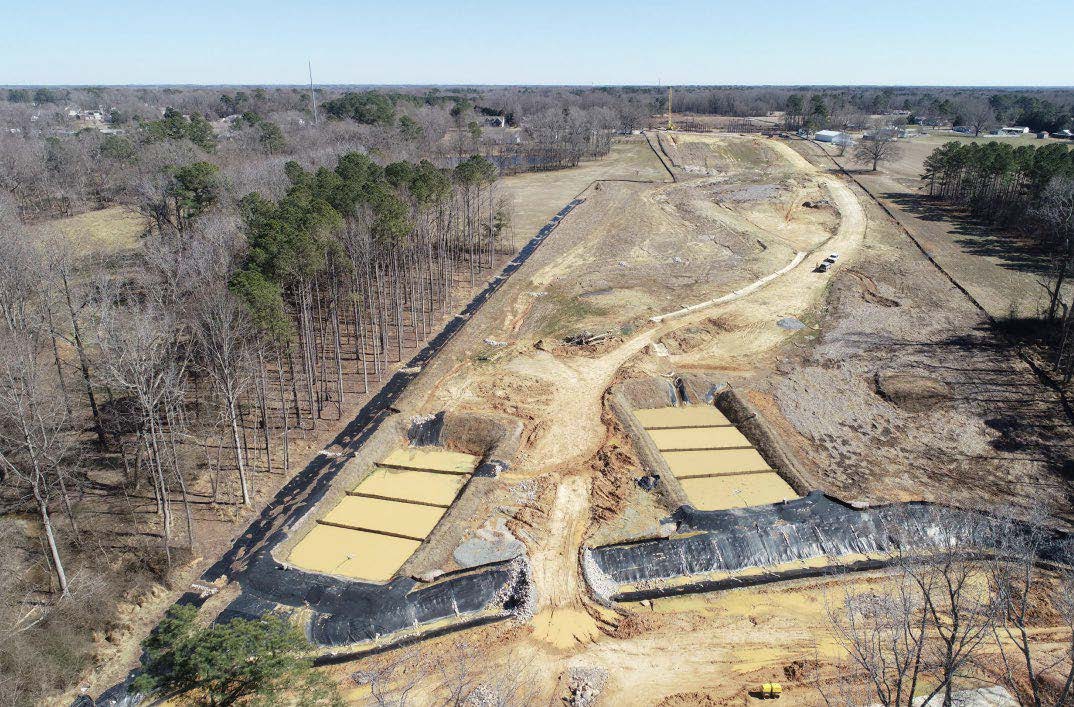Construction of roads exposes large areas of soil which can lead to high erosion rates. Current best management practices aregood at keeping larger sized particles on-site, but smaller particles still remain a problem for construction site stormwaterdischarges. Turbid water leaving construction sites can have detrimental impacts for the surrounding environment, especially foraquatic organisms such as mussels. Polyacrylamide (PAM) has been shown to help reduce turbidity of construction sitestromwater. Additionally, good vegetation cover can help reduce erosion from construction sites. Typically grass is planted, butthere has been increased interest in using wildflowers as they provide food and habitat for a variety of pollinator insects. Ourresearch evaluated the effectiveness of (1) I-540 sediment basins on Swift Creek water quality (turbidity and total suspendedsolids [TSS]) and (2) different wildflower mixes with and without compost and fertilizer as a stormwater control measure (SCM).The monitoring of sediment basins and Swift Creek investigated water quality being discharged from the sediment basins andwater quality in Swift Creek on a storm event basis. The results from the sediment basin monitoring confirmed PAM applicationwill reduce the turbidity and TSS of water in sediment basins. Without PAM application, turbidity levels being discharged wereexceeding that of Swift Creek. However, Swift Creek often rose 6-7’ during rain events, and the turbid discharge from theconstruction site was rarely evident in the Swift Creek monitoring. These results suggest that (1) PAM should be consistentlyapplied to get the clearest construction site stromwater discharge and (2) the flashiness of Swift Creek might be diluting theturbid water from the construction site. Second, the field studies considered vegetation cover from grass, wildflowers, and grass-wildflower mixes with and without compost (30% by volume) and/or fertilizer. It was found in both field studies that compostcan be used without fertilizer and get the same vegetation cover as compost plus fertilizer, and compost had increased infiltrationrates compared to no compost. Grass-wildflowers mixes and wildflowers preformed the same as grass for vegetation cover up toone year after planting. Vegetation establishment was best when excelsior matting was used as the ground cover compared tohydromulch. Overall, the results suggest that wildflowers and grass-wildflower mixes can be used with compost and no fertilizerto get good vegetation cover. Compost is recommended on less steep slopes as it can increaser the infiltration rate of the soil,which is necessary for SCMs. It is unknown if these practices could be applied to steeper (>10%) slopes. Pollinator friendlyvegetation appears to be a viable option for an alternative ground cover on less steep slopes.

